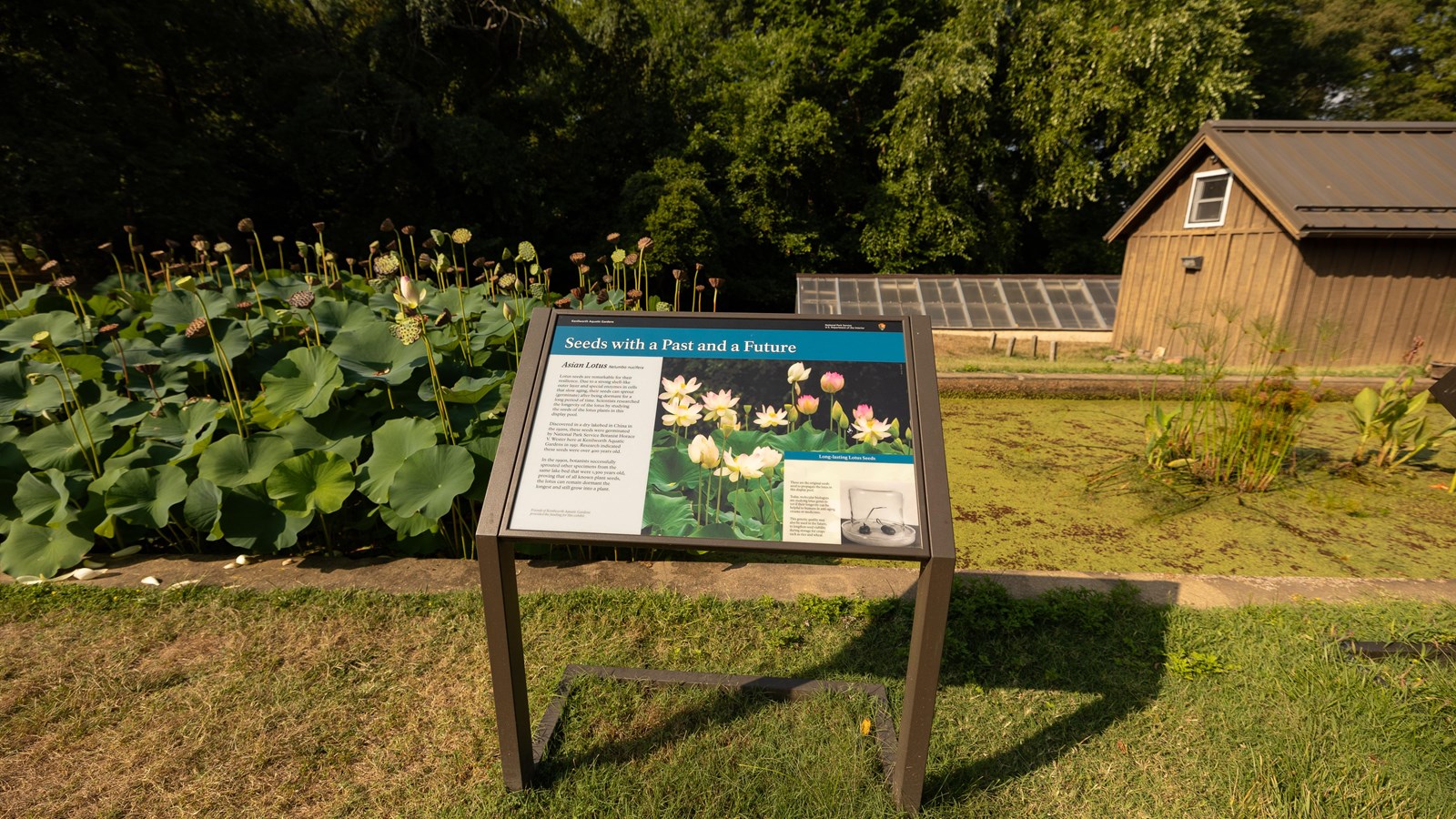Last updated: July 24, 2024
Place
Information Panel: Seeds with a Past and a Future

NPS / Kelsey Graczyk
Seeds with a Past and a Future
Asian Lotus Nelumbo nucifera
Lotus seeds are remarkable for their resilience. Due to a strong shell-like outer layer and special enzymes in cells that slow aging, their seeds can sprout (germinate) after being dormant for a long period of time. Scientists researched the longevity of the lotus by studying the seeds of the lotus plants in this display pool.
Discovered in a dry lakebed in China in the 1920s, these seeds were germinated by National Park Service Botanist Horace
V. Wester here at Kenilworth Aquatic Gardens in 1951. Research indicated these seeds were over 400 years old.
In the 1990s, botanists successfully sprouted other specimens from the same lake bed that were 1,300 years old, proving that of all known plant seeds, the lotus can remain dormant the longest and still grow into a plant.
Long-lasting Lotus Seeds
These are the original seeds used to propagate the lotus in this display pool.
Today, molecular biologists are studying lotus genes to see if their longevity can be helpful to humans in anti-aging creams or medicines.
This genetic quality may also be used in the future, to lengthen seed viability during storage for crops such as rice and wheat.
